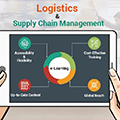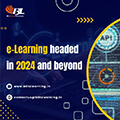
Blog
- Home
- Blog

03Apr
Breaking Barriers: How 5G Brings AR/VR to Rural and Remote Areas for Corporate Industries
Introduction
In the rapidly evolving world of technology, 5G has emerged as a game-changer, transforming industries by enabling faster, more reliable internet connectivity. Although 5G has generated much of the hype in urban areas, its real promise is in empowering remote and rural places. The fields of augmented reality (AR) and virtual reality (VR), which are transforming how organizations function, are among the most promising uses of 5G in these domains. Once exclusive to tech-savvy metropolitan areas, these immersive technologies are now poised to revolutionize rural sectors by removing access hurdles and opening up new opportunities.
The Power of 5G in AR/VR
5G, the fifth generation of mobile network technology, promises to deliver ultra-fast speeds, low latency, and high connectivity capacity. These features are essential for the seamless delivery of AR and VR experiences, which require a stable and fast internet connection to function properly. AR and VR applications in eLearning are highly data-intensive, requiring quick rendering of 3D simulations, video feeds, and interactive features that traditional 4G networks may struggle to support. With 5G, these issues are mitigated, making it possible to run AR and VR applications smoothly even in remote areas.
Expanding Access to eLearning in Remote Areas
One of the most significant advantages of 5G is its ability to provide high-speed internet to rural and remote locations, where traditional internet infrastructure has often been a challenge. By enabling faster, more reliable connectivity in these underserved areas, 5G opens the door for corporate industries to offer cutting-edge eLearning experiences to employees who may not have had access to such opportunities before.
1. Immersive Training at a Distance
Rural employees who previously lacked the means to attend in-person training sessions or access high-quality online content can now take advantage of AR and VR-based training programs. These immersive experiences allow workers to practice complex tasks, learn new skills, and improve their performance without having to leave their remote locations. Whether it's using VR to simulate machine operations or AR for on-the-job training and remote assistance, 5G ensures that these technologies can run without interruption, making training more accessible than ever before.
2. Cost-Efficient Learning Solutions
For many corporate industries, particularly in sectors like manufacturing, agriculture, and logistics, training is essential to ensure worker safety and productivity. However, the cost of sending employees to central training hubs can be prohibitive. With 5G-enabled AR/VR training, companies can significantly reduce the need for travel and accommodations, offering remote employees the opportunity to participate in training from the comfort of their own location. This not only reduces costs but also minimizes the environmental impact of travel, aligning with corporate sustainability goals.
3. Real-Time Collaboration and Support
The advent of 5G also facilitates real-time collaboration between employees in remote areas and experts located elsewhere. With AR, employees can get hands-on guidance for tasks or repairs through interactive overlays, all while receiving immediate assistance from experts via live video feeds. This creates a collaborative learning environment that fosters productivity and problem-solving, without the need for physical presence. In addition, VR-based team-building exercises can bring together remote workers in virtual spaces, allowing them to interact and collaborate as if they were in the same room.
4. Personalized Learning Experiences
5G also enhances the personalization of eLearning by enabling adaptive learning technologies that respond to the learner's progress in real-time. Using AR/VR, learners in rural areas can benefit from tailored experiences that meet their specific needs, whether it's advanced training for a specialized role or a general skills upgrade. These technologies are particularly valuable in industries with diverse workforces, as they can adjust the learning content based on individual learning speeds and preferences, ensuring that employees receive the most effective and relevant training.
Conclusion: Empowering Remote Workforces
The integration of 5G with AR and VR technologies is a game-changer for corporate eLearning, especially for industries with workers in rural and remote areas. By breaking down the connectivity barriers that have traditionally limited access to advanced training, 5G is enabling companies to offer high-quality, immersive learning experiences to their entire workforce, no matter their location. This opens up new possibilities for skill development, improves worker efficiency, and reduces the logistical challenges associated with traditional training methods.
As 5G networks continue to expand globally, they will play a pivotal role in shaping the future of corporate eLearning. Not only will companies be able to provide more engaging and effective training programs, but they will also be able to do so in a way that is more inclusive and sustainable. With the power of 5G, AR and VR are no longer just for urban areas—they are set to transform how rural and remote workforces are trained, empowered, and connected to the larger corporate ecosystem.

Neha Khare
About authorNeha Khare specializes in designing engaging and effective learning experiences tailored to learners' needs and also creates insightful blogs on corporate e-learning. She develops creative instructional methods, integrates multimedia, and aligns content with learning goals. Neha's innovative techniques and blog contributions significantly enhance the quality and impact of corporate training programs.



Leave a comments